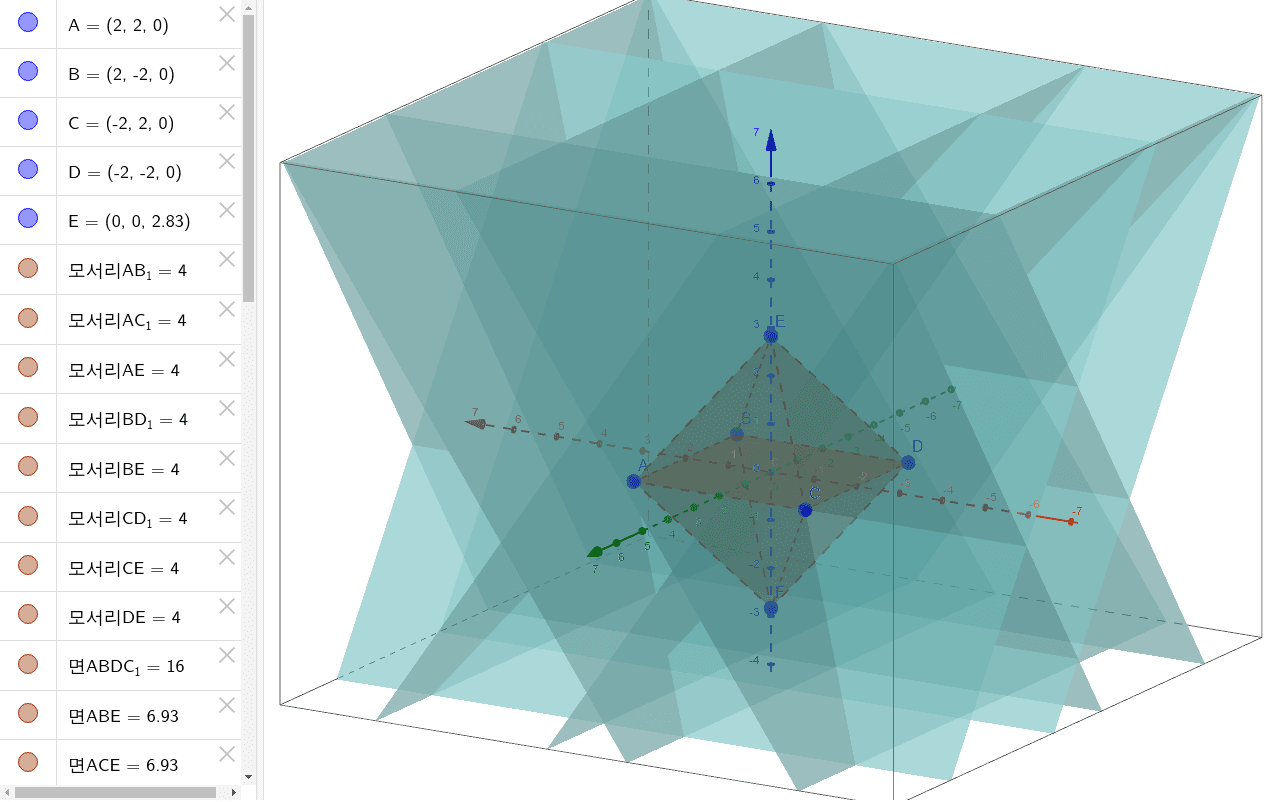
The next two important toolbars are Circles - which can be constructed point-radius, center-edge, or three-point (as well as arc versions). The next dialog section contains Constructive Geometry rules for creating lines. With two points, you can place Lines, Segments, or Rays - along with some styled versions. The second construction you will learn about in any constructive geometry course are Lines, and GeoGebra mirrors that. Very useful for constructing objects - either in the algebra view or with other tools - they are the fundamental building blocks of geometry in Geogebra. The basic is the point - which can be placed anywhere, or constrained to an existing curve, surface, or intersection. Open the geometry toolbars, and you will see a variety of options. You can also use draggable points on the display for user input - as we will see getting into the Geometry part of GeoGebra. Editing a slider will give you options about the variable - its minimum, maximum, and step values - which allow for basic user input. If you just type in a variable name, it will create a Slider. Today will very much continue that trend. The scripting language is based heavily on JavaScript, a language we have danced around but never talked about in depth.

We won't be using them today, but they allow for the construction of complicated interactable figures with conditionals and computations - which you can share on the internet, or as.

Other TabsĬolor and Style are fairly self-explanatory, but it is worth noticing the Advanced and Scripting tabs. In GeoGebra, you will often be building objects out of other objects in a constructive way, so being able to hide this "construction geometry" is remarkably helpful. The caption is notable that - like a Text object - it can contain (a subset of) $\LaTeX$, so we can label our graphs with familiar notation.
GEOGEBRA CLASSIC 6 VS 5 DOWNLOAD
The tools remain virtually identical, just reshuffled a bit, so you can follow along on whatever GeoGebra platform - download or web - you wish. GeoGebra is undergoing a fair bit of unbundling, but I am still fond of the Classic Interface. While not quite optimized for mathematical research, it can be a great graphing tool, interactive teaching and assessment tool, mathematical aid, or just a fun toy. GeoGebra is a wide variety of integrated technologies in one package - a Computer Algebra System, 2D and 3D Graphing Calculator, 2D and 3D Constructive Geometry Solver, Spreadsheet system, and more.

Many of the things we will say also apply to the for-profit clone Desmos, but there is little reason to support corporate power-grabs no matter how many non-binding assurances they make on their website of their good intent. Today we will be talking about two tools that are excellent for creating intricate graphics with very fine control, embedded $\LaTeX$, and scalable output. Graphing in this plot-look-modify-plot loop is OK, but it can be both unintuitive and hard to control specific details. Interactive Plotting with GeoGebra and Inkscape.


 0 kommentar(er)
0 kommentar(er)
